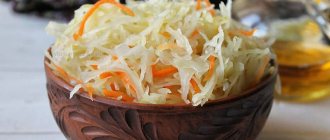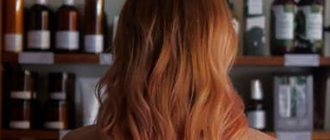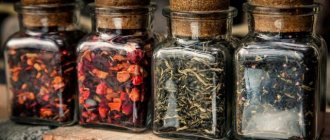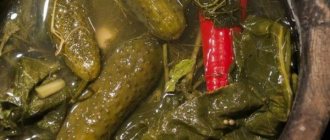Water is considered the most common substance in the world, thanks to which life arose on the planet. It can exist in several states - liquid, solid and gaseous. Water plays an important role in shaping weather conditions on Earth and climate in general. Rivers, lakes, oceans are made of water; The substance is also found in atmospheric air and fills the cells of all living beings. It has been established that human bone tissue contains 45 percent moisture. In addition, this simple substance is indispensable in technological processes.
Features of water
Water is a conductor of thermal energy and a reagent. It is capable of dissolving some substances. In living organisms, the substance helps regulate temperature, transports oxygen through cells, and serves as a lubricant. Thanks to these features, water is considered the most popular product.
For each industry (food, technology, medical) a certain type of liquid is used, which has been pre-treated and purified from harmful substances.
We list the common types of water:
- Distilled - suitable for medical, household and technical needs.
- Bottled - for daily human consumption.
- Mineral – used to treat certain diseases.
- Boiled – used for drinking.
Many consumers are interested in the shelf life of water. It is determined by the liquid storage conditions, composition and other features.
Distilled
To produce distilled water, special equipment is used - distillers.
The liquid is purified from various impurities - salts, gases and other substances. The output is crystal clear water, similar in composition to melted ice. The substance is an excellent solvent. Unlike ordinary tap water, it begins to boil at a higher temperature. It is used for technical and household needs. Most common uses:
- Caring for internal components of vehicles;
- Production of detergents;
- Air humidification using special devices;
- Ironing;
- Cleaning precision measuring instruments;
- Laboratory research;
- Production of medicines.
Distilled water is suitable for human consumption. For example, it is present in the Italian grape-based alcoholic drink (grappa). However, it is not suitable for daily drinking due to the lack of mineral salts and beneficial elements that play an important role in a complete human diet. It has been noticed that a low content of salts and other substances increases the likelihood of vascular and heart diseases.
Therefore, distilled water is much more often used for pharmacological and technical purposes. The production of liquid is regulated by the Russian state standard number 6709-72. If the water is used for pharmaceutical substances, the storage time is only 3 days after production.
After 3 days, the water oxidizes, which causes distortion of test results, deterioration in the quality of medications, etc. As for other areas of application, the duration of storage of the substance can be unlimited. The most suitable containers are plastic bottles, ceramic and glass vessels. It should be noted that when stored in tightly closed containers, the substance begins to smell musty over time. To avoid unpleasant consequences, calcium chloride tubes filled with lime from the inside are attached to the lid. Then cover with cotton wool.
How to erase the expiration date from a plastic bottle. How to wash a bottle
It would seem that it is not such a difficult task to wash a bottle. However, if you need to clean out a large number of recyclable containers (for example, to seal homemade wine), this can turn into a real problem. Old stains, glass surfaces stained from stagnant water, glue from paper and plastic labels, excise stamps - you'll have to tinker.
You will need
- - brush;
- — dishwashing detergent (soda, salt);
- — fine abrasive for filling the bottle;
- - acetone or solvent;
- — means for removing mineral deposits;
- - sticker remover;
- - cleaning powder;
- - warm and hot water;
- - spacious capacity;
- - knife, rag, hard washcloth.
Instructions
1
The easiest way to clean a bottle is with a good old bottle brush, hot water and a little baking soda, salt or dishwashing liquid. To prevent household chemical residues from settling on the glass cavity, rinse the bottle thoroughly under running water or in several clean waters. As you pour out the liquid, shake the bottle vigorously from time to time.
2
If complex contaminants remain on the walls of the vessel (for example, green or brown deposits of microscopic algae), you will need to resort to abrasive agents. Fill the contaminated container with sawdust (cereals, coarse sand, eggshells, etc.). If you clean bottles in the summer, then just use grass.
3
Add water to the container and shake the bottle thoroughly until the dirt comes away from the inner walls. Then all you have to do is wash and rinse the container.
4
Use a special mineral deposit remover to remove white deposits. It forms in bottles due to storing hard water in them. You can look for such a product in a household chemical store (for example, Sanox, Khimitek and others).
5
To remove the paper label, bottles are usually soaked in a large container of very warm water for several hours. To speed up the process, you can add a little dishwashing detergent to the water.
6
After soaking, some labels fall off the bottles by themselves. If a more powerful adhesive composition was used, the remaining paper will have to be cleaned off using an abrasive sponge and cleaning powder. At the same time, traces of glue will be washed off. Fill the film labels with hot water and remove them with the tip of a knife.
7
If the glue does not respond to sponge and powder, wipe it with acetone or solvent. You can also look for a specialized industrial product for removing stickers such as “Anti-vandal” or “Polycarbon Label”.
Helpful advice
Pour some clean water into the cleaned bottle - if it flows down the walls in a continuous stream, you have managed to wash the bottle clean. Liquid always forms droplets on dirty glass.
Bottled
This type of water is bottled in plastic and sold through retail chains. Many organizations purchase packages of several dozen bottles. The container capacity varies widely - from 300 milliliters to 19 liters. In such vessels they sell water for various purposes - drinking, mineral, carbonated. There is water treated in a special way - deionized and distilled. Bottled water is almost always associated with a liquid intended for daily consumption.
Note! The product has different shelf life - 3, 6, 12, 24 months.
The exact expiration date is determined by the purpose of the product, the type of packaging, and the presence of artificial preservatives in the composition. Pure water, devoid of any impurities, is preserved for many years - that is, indefinitely. However, over time the taste may deteriorate. The main reason for this is the dishes. As you know, plastic used to make containers deteriorates over time. After the time specified by the manufacturer, the container begins to release various chemicals. They spoil the taste and make the contents dangerous for consumption. Bottled water can quickly deteriorate if storage conditions are not maintained. For example, if you leave the bottle in direct sunlight.
Many chain stores sell water in glass containers. The use of such vessels promotes long-term storage.
As for open water, devoid of packaging, the shelf life is 3-5 days, subject to temperature conditions. It is recommended to use the refrigerator compartment. After the specified period has expired, water can only be consumed after boiling. Thanks to heat treatment, pathogenic microorganisms that have managed to multiply in the liquid over the past few days die.
If the purchased water smells bad even if the listed storage rules are followed, it must be returned back to the store.
Mineral
Mineral water contains salts and other substances that are essential for the normal functioning of the human body. There are table and medicinal mineral waters. Some varieties are intended for external use. This liquid is used for rinsing, inhalation, irrigation, etc. Mineral waters are commercially available, packaged in glass containers with a capacity of 300 to 500 milliliters. Plastic bottles come in much larger volumes - from 0.5 to 2 liters. Manufacturers always indicate the shelf life of the product on the packaging. Water can be stored in plastic containers for 3 to 18 months. In glass containers – up to 1 year.
To prevent the product from deteriorating before the indicated expiration date, it is recommended to observe temperature conditions - from +5 to +20 degrees. The container should be kept in a dry, cool and ventilated area. Avoid exposure to sunlight. It is best to leave the bottles in a horizontal position. After uncorking, the shelf life is reduced to 5 days. If there are organic substances in the water, the product can be stored for up to 1 week in the refrigerator.
If the above storage rules are observed, mineral water has the same healing effect as directly from the source. Too long storage leads to changes in the chemical composition of the product. If the water has spoiled before the expiration date, the consumer has the right to return the product back to the store.
Marking on the container
Labeling of drinking and mineral water is regulated by the provisions of the following regulatory documents:
- GOST 32220-2013 , which describes the requirements for the production and packaging of drinking water packaged in containers.
- GOST R 51074-2003 , which regulates the requirements for food products.
- GOST R 54316-2011 , which specifies the general technical conditions for the production of mineral natural drinking waters.
What is the best way to store water?
The structure of water is largely determined by the container chosen for storage. Through experiments, several of the best materials from which the vessel can be made were determined - glass, silver, steel. The greatest biological activity was recorded with a combination of light and silver.
Scientists have determined the best way to store drinking water. It turned out to be glassware exposed to the sun. It is advisable to place a silver coin or silver jewelry at the bottom. Thanks to the particles of this metal, the quality of the liquid improves.
It is not recommended to store water in plastic containers. Since the packaging is made of synthetic substances, the chemical composition of the water deteriorates over time. A bottle filled with tap water can be stored at a temperature no higher than +7-10 degrees. If the environment is warmer, toxic substances will begin to be released. Pathogenic microorganisms will also begin to multiply. It is recommended to use water that has been stored incorrectly for purely technical purposes.
Ammonium
Not more than 0.00002% (ODS “Ammonia”). The determination is carried out using a standard solution containing 1 ml of a standard ammonium ion solution (2 μg/ml) and 9 ml of ammonia-free water. For determination, 10 ml of the test sample is taken.
Note : Ammonium ion standard solution (2 µg/ml) is prepared by diluting ammonium ion standard solution (200 µg/ml) with ammonia-free water.











